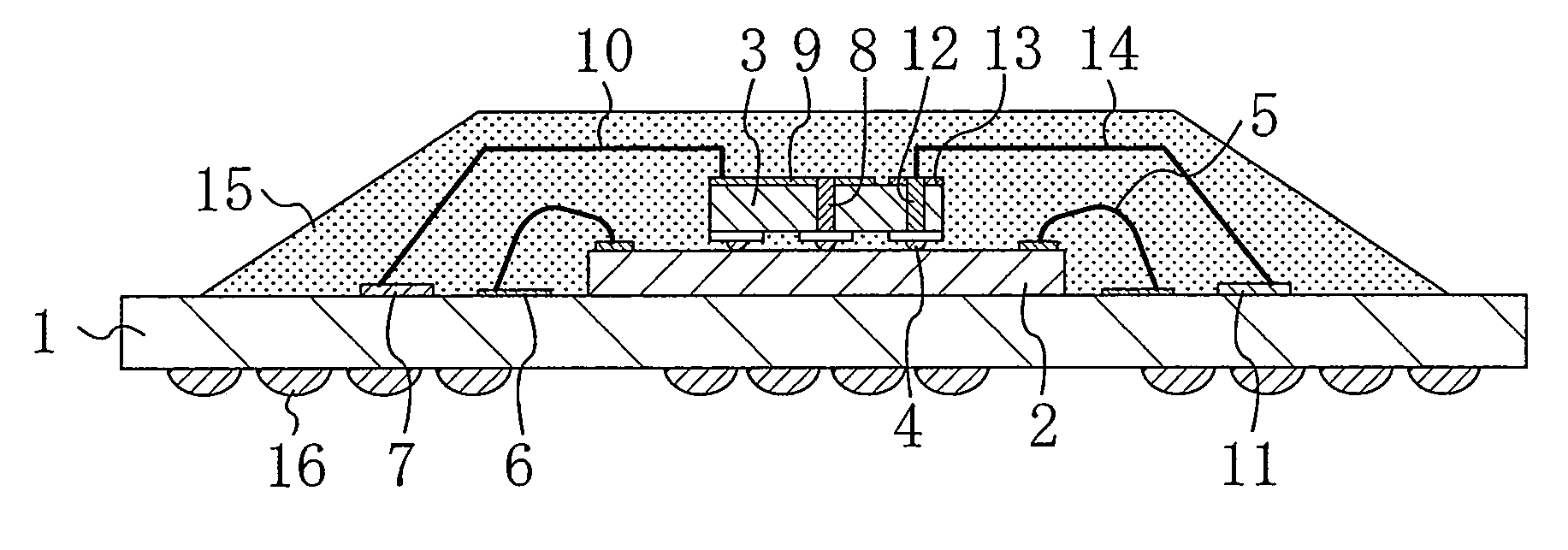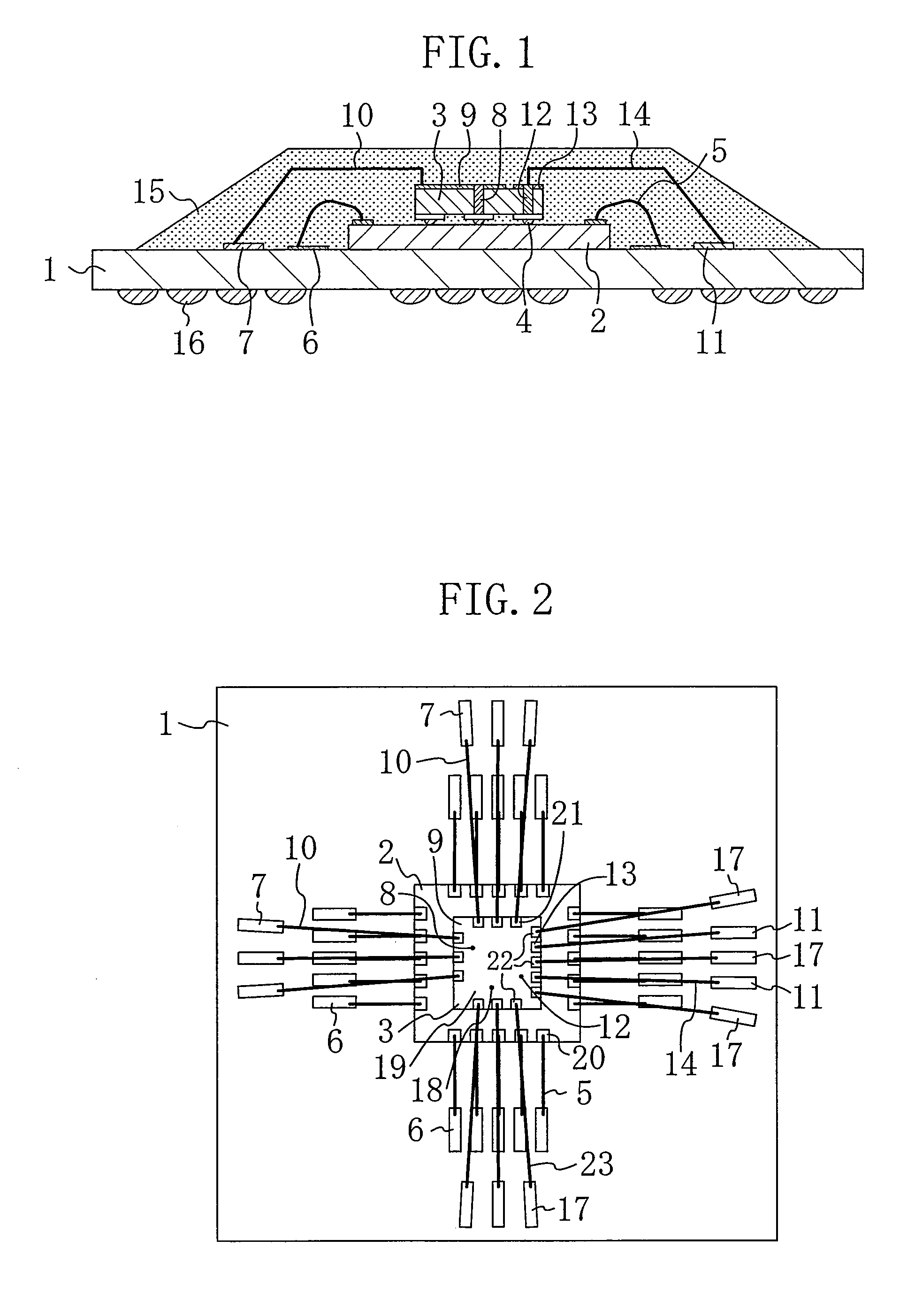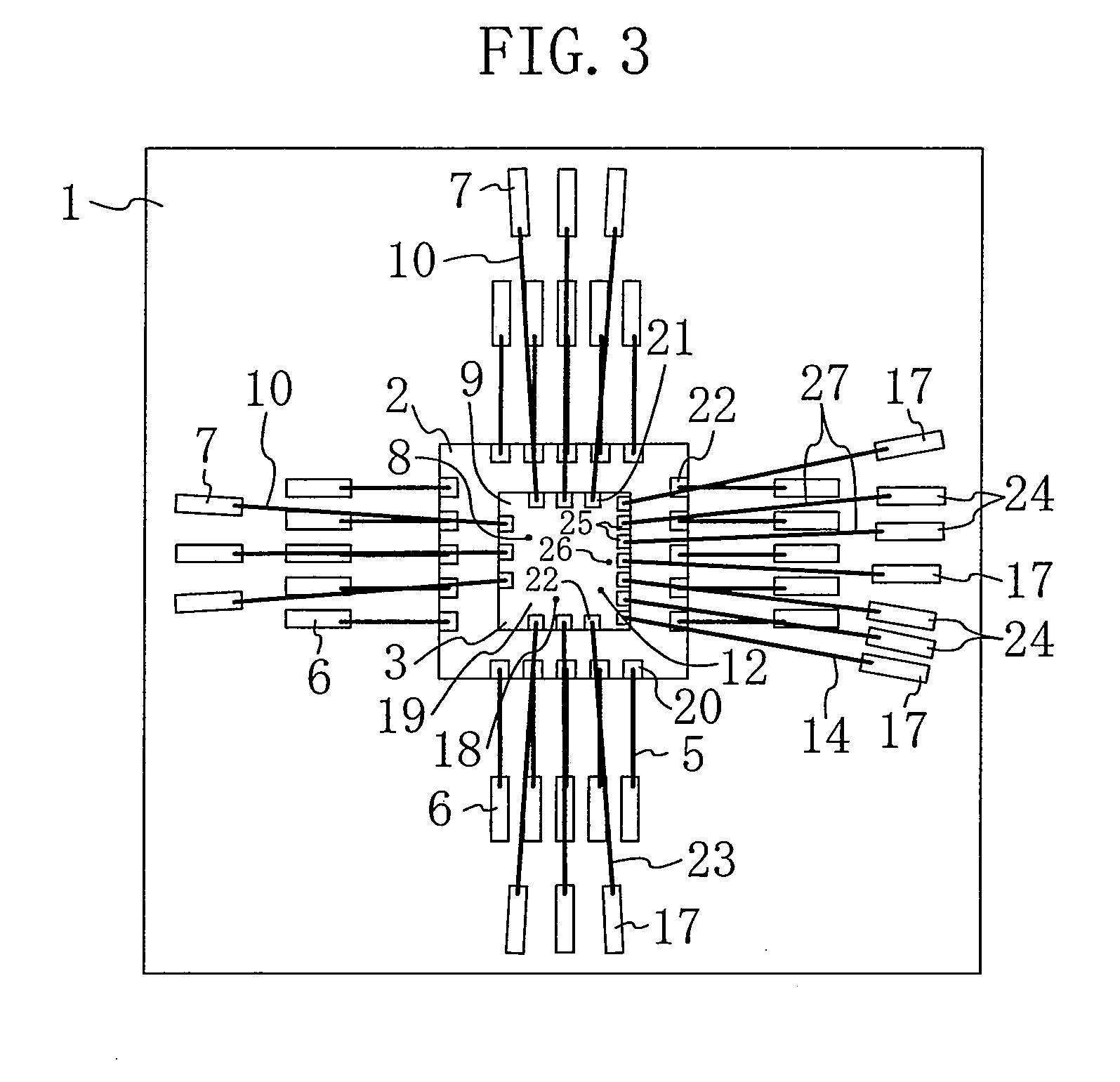Semiconductor device
a semiconductor device and semiconductor technology, applied in the field of semiconductor devices, can solve the problems of erroneous operation of semiconductor devices, inability to transmit signals, waveform distortion, etc., and achieve the effects of reducing impedance, low capacitance, and reducing waveform distortion
- Summary
- Abstract
- Description
- Claims
- Application Information
AI Technical Summary
Benefits of technology
Problems solved by technology
Method used
Image
Examples
first embodiment
[0022]FIG. 1 is a cross-sectional view schematically showing a semiconductor device according to a first embodiment of the present invention, and FIG. 2 is a plan view showing the semiconductor device of the first embodiment as viewed from above. The mold resin is not shown in FIG. 2 for a better understanding of the structure.
[0023]As shown in FIGS. 1 and 2, the semiconductor device of the present embodiment includes a BGA substrate 1, a first semiconductor element 2, and a second semiconductor element 3. The BGA substrate 1 includes signal pads 6 and 11, GND pads 17 and power supply pads 7 formed on its upper face, and metal balls 16 formed on its reverse face. The first semiconductor element 2 is mounted on the upper face of the BGA substrate 1 with its circuit formation face facing up, and with signal pads 20 formed on its upper face (circuit formation face). The second semiconductor element 3 is mounted on the upper face of the first semiconductor element 2 with its circuit for...
second embodiment
[0038]FIG. 3 is a plan view showing a semiconductor device according to a second embodiment of the present invention as viewed from above. In FIG. 3, like elements to those shown in FIGS. 1 and 2 are denoted by like reference numerals and will not be further described below.
[0039]As shown in FIG. 3, the semiconductor device of the present embodiment is a device for transmitting pairs of differential signals, such as LVDS, wherein GND lines or power supply lines are provided on both sides of a line pair for transmitting a differential signal pair, thereby achieving an electromagnetic separation between pairs of differential signals.
[0040]Pairs of differential signal pads 24, each including pads adjacent to each other for transmitting a differential signal pair, are provided on the BGA substrate 1 so that each pair of the differential signal pads 24 is interposed between the GND pads 17. Moreover, differential signal pads 25 are provided on the second semiconductor element 3, and a di...
PUM
 Login to View More
Login to View More Abstract
Description
Claims
Application Information
 Login to View More
Login to View More - R&D
- Intellectual Property
- Life Sciences
- Materials
- Tech Scout
- Unparalleled Data Quality
- Higher Quality Content
- 60% Fewer Hallucinations
Browse by: Latest US Patents, China's latest patents, Technical Efficacy Thesaurus, Application Domain, Technology Topic, Popular Technical Reports.
© 2025 PatSnap. All rights reserved.Legal|Privacy policy|Modern Slavery Act Transparency Statement|Sitemap|About US| Contact US: help@patsnap.com



